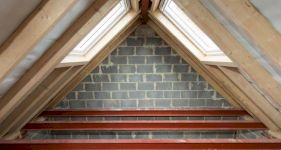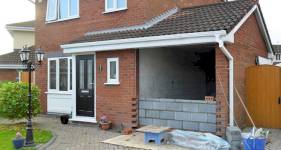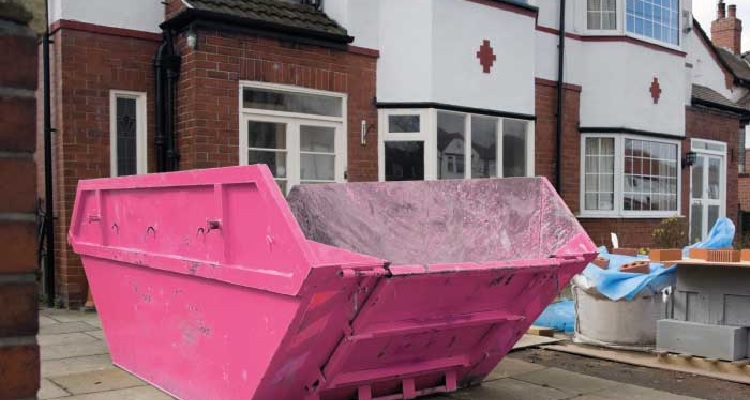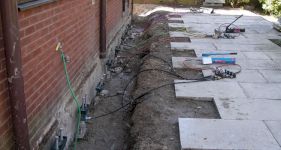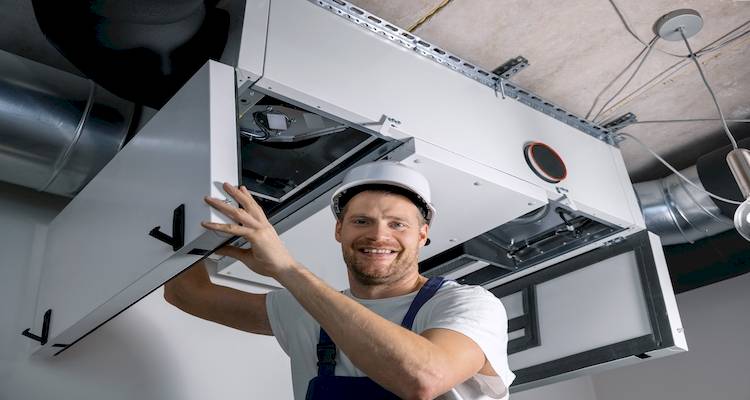Cost to Build a House
- The average cost of building a new house is around £240,000
- The job will take approximately 6 - 9 months to complete
- A complete pricing breakdown which includes cost factors to consider, the benefits of building a new home, along with what such a task usually involves
- How long the job should approximately take and a general overview of what kind of jobs can be performed
- How to find and hire house builders
Building your own home offers you the chance to design a house that works perfectly for you and your family.
But how much is the cost of building a house?
On average, you're looking at a total spend of around £240,000 (excluding the cost of land).
Ready for a quote?
We have a range of house builders ready to offer you a free quote!
This guide will explain the labour costs and steps involved in house building.
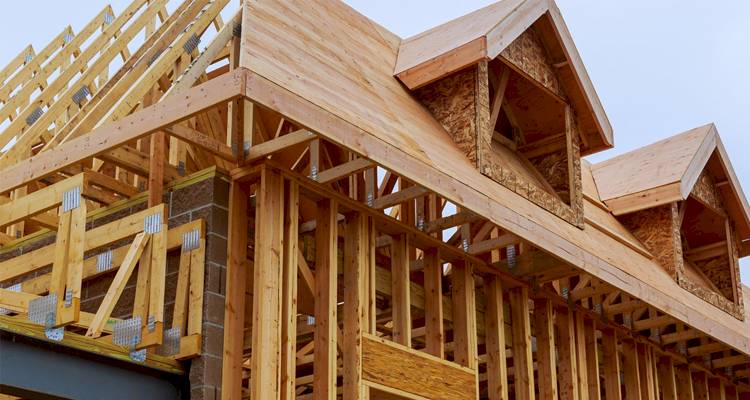
£240,000
Table of Contents
- How Much Does it Cost to Build a House?
- Additional House Building Costs
- Labour Cost to Build a House
- Building Regulations & Planning Permission for New Houses
- What Impacts the Cost of Building a House?
- What's Involved in Building a New House?
- Can I Build a New Build Myself?
- Benefits of Building a New Home
- Checklist: Hiring Contractors to Construct a New Home
- FAQs
How Much Does it Cost to Build a House?
The average cost to build a house is £240,000, but the total price can vary enormously. Where you plan to build your house and the size you want are two of the main factors that will alter the cost. For example, a bungalow in the north of England may cost considerably less to build than a large, detached house in London.
Of course, you'll need to purchase some land to build your house on, and you may find it's not just a London location that puts the price up. The more desirable the location, the more you may have to pay. For example, a plot with good views within a National Park or near a popular resort could cost far more than a similar-sized plot elsewhere.
Plus, planning restrictions could require you to modify your design and use materials that fit in with the local area. Groundworks or demolition of old buildings may also be required before you can start. And every project needs a properly drawn up plan, which will cost around £2,000.
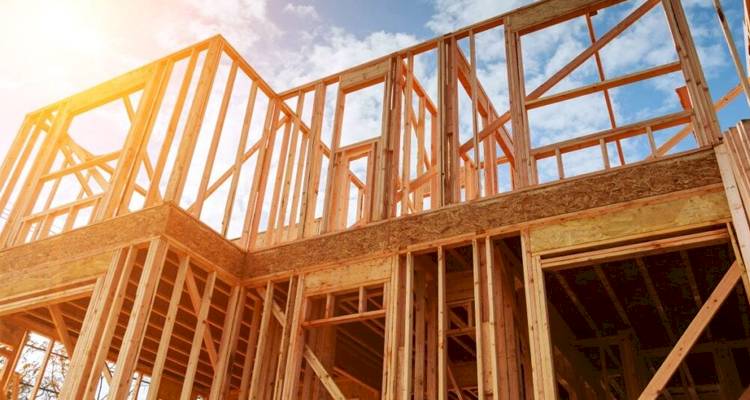
Building a new house costs from £1,700 to £3,500 per square metre. The price of building a new home varies so much because there are multiple construction methods and materials you can use.
Whether you decide on a traditional brick-built home, a timber frame, or a prefabricated kit, may considerably affect the price you pay. However, the style, size and location of your property aren't the only factors to consider as labour fees can account for a substantial proportion of the overall cost.
A construction company may have its own team of specialist tradesmen, saving you the time of hiring each one individually. Although that also means you can't shop around for the lowest price.
Hiring a project manager for the build can also add an extra expense. But equally, this could help lower some of your other material and labour costs and help the build go more smoothly.
If I'm building a house in the countryside does it need to be done under paragraph 80?
Example Costs of Building a House
The following guide prices are the current average build costs, although end prices may vary depending on the design, materials and location of the property.
| Type of house | Average floor space m 2 | Average build cost |
|---|---|---|
| Bungalow | 77 | £200,200 |
| Chalet or dormer bungalow | 82 | £213,200 |
| Two-storey end of terrace | 86 | £223,600 |
| Two-storey, semi-detached | 93 | £241,800 |
| Three-storey terrace or townhouse | 100 | £260,000 |
| Two-storey, detached | 155 | £403,000 |
Please note the average build costs quoted above, do not include the initial purchasing of land.
Additional House Building Costs
Here are the additional costs you may encounter:
Putting Up Fences
Once your new house has been built, and the heavy machinery has gone, you may wish to install new fences around your property.
It's important to check the property boundary and get the fences put up in the right place. Depending on how much fencing you need and the height and style you go for, it may cost £1,000 to £3,000 to install.
Laying a New Lawn
Although your plot is likely to have been levelled, and you'll have a lovely new home on it, it's unlikely you'll have any garden to speak of. The outside space will probably be a mix of earth and hardcore. So, you may wish to lay a new lawn to add some instant greenery.
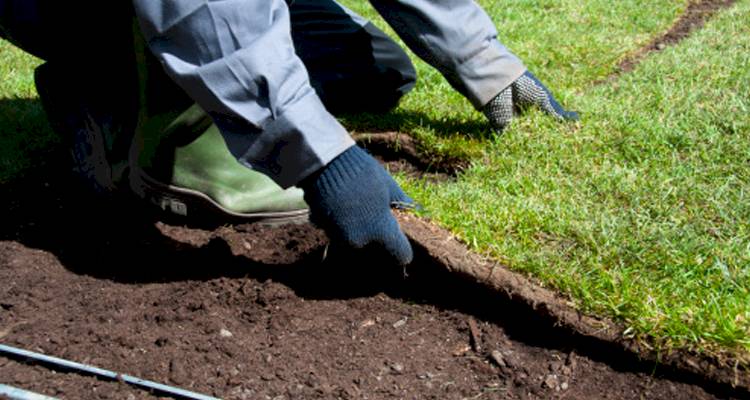
Although it may take a few years to establish itself properly, it will give you some usable outside space. The cost of laying garden turf does vary, but on average, you'll pay around £15 per m².
Creating a Driveway
Off-street parking at the front or side of a house is a must-have for modern lifestyles. So, installing a driveway should be high on your list of priorities for the outside space.
You may decide on a simple tarmacked or fashionable resin driveway, depending on your budget and preferences. A resin driveway should cost around £40 per m² and a tarmacked driveway around £45 per m².
Adding Electric Garden Gates
If you're going for a high specification home with all the mod cons, then it's worth considering electric gates at the bottom of your driveway.
Although this may cost around £3,000 to install, It will undoubtedly add value, security and convenience.
Installing Central Heating
A new home isn't complete without central heating, but where you are and what services are available in the area may dictate what type you install.
You may need to run a gas supply to the property so you can install a new boiler. Or you may decide to install an oil-fired boiler instead.
Depending on what you install, it could add between £2,000 and £4,000 to your cost.
Fitting Solar Panels
It's worth thinking about futureproofing your new home and boosting its eco-credentials. And one way to do this is by installing solar panels.
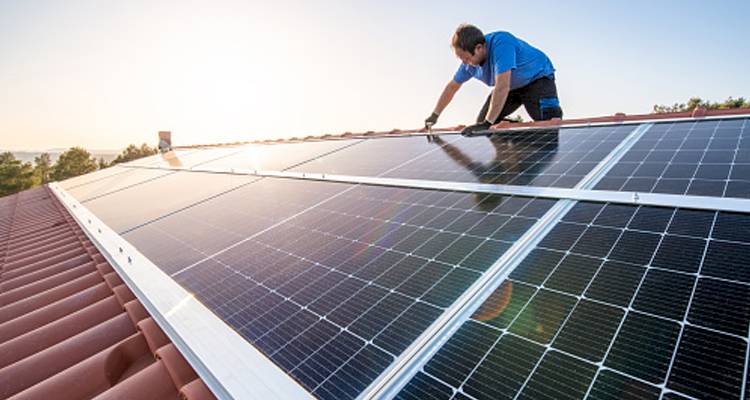
Although the initial cost could be from around £2,000, you could save money over time. You'll need to check solar panels are right for your home first, of course, and find the right specialists to install them.
Home Security Systems
Keeping your new home secure is something else you might find important. There are also many alarms and gadgets to choose from, so this additional cost can vary depending on the type of home security you decide is suitable.
However, you should expect to pay around £500 to have a system installed.
Laying Floor Coverings
The interior of your newly built house will need some floor coverings fitting, whether that's floorboards, carpets or tiles. So, you'll need to think about this cost to finish off your interior, ready for moving in.
The price of laying carpet costs from £250 per room and the price of tiling a floor costs from £400 per room.
Installing a New Kitchen
Fitting a new kitchen in your house will be one of the biggest priorities for the interior. The size and quality of materials can have a big effect on how much you pay.
Plus, there are multiple appliances and gadgets to think about too. Installing a new kitchen should cost from £5,000 for a basic model.
Fitting a New Bathroom
Apart from the kitchen, the bathroom is the most important room in the house. And you may have more than one planned for your new home. Family bathrooms and en suite bathrooms will need installing to your suit your needs, taste and budget.
However, you're likely to pay from £5,000 to £10,000 when it comes to the cost of a new full bathroom.
Labour Cost to Build a House
As you might now be aware, labour costs and timescales can vary a lot when you build a new house. On average, labour costs can account for between 35% and 55% of the total build cost.
The construction time can take anywhere between six and nine months without hold-ups from planning decisions and material or labour shortages.
Obviously, the bigger the house you're building, the longer it will take. However, the method of construction will also affect the amount of time it takes to build your home.
Likewise, the materials you use will also impact the build time. A traditional brick-built home will take longer to build than a modular or timber-framed house.
For example, it can take six months to build the main structure of a brick-built home, whereas a timber-framed house may only take a matter of weeks.
When it comes to the labour costs, there are a wide number of professions required, some of which we've outlined below.
Structural Engineer
For example, hiring a structural engineer to oversee the job can cost as much as £450 per day.
You may not require them onsite throughout the entire build, but the value they add in expertise will make them one of the most important members of the team.
Builders and Labourers
The type of labour you hire will affect your labour costs and your build time. A developer or construction company with its own team of contractors will be quicker and easier than hiring individual trades directly as you won't need to find, hire and coordinate each one. However, you may find you pay more for this convenience.
Where you live can also affect the cost of labour. The price you pay for labour is likely to cost more in London than it would in the Midlands or the North of England. However, remote places such as the Scottish Highlands may cost more as local builders may not be so readily available.
So, how much might you pay for the different types of labour needed to build a house? A single builder can charge around £200 per day, but it's likely they will use help from labourers too, which can cost from £100 per day.
Roofers
However, it's not just builders that are involved in constructing and completing a house. Depending on your builder's skills, you will likely need specialists such as a team to install a new roof to complete some of the structural work.
Scaffolding
The cost of hiring scaffolding also needs to be taken into consideration. The average cost for larger projects is between £7,500 and £11,500 although when building a new house it may be even higher due to the duration the scaffolding is required.
Carpenters and Plasterers
You'll certainly need a carpenter for jobs such as fitting staircases and a plasterer for the walls and ceilings. A specialist company may also fit windows.
Electricians and Plumbers
Qualified electricians and plumbers will be required at different stages of the build too. These specialist trades may charge higher rates, but you can expect to pay between £120 and £250 per day.
Additional Labour Costs
And finally, there may be hidden labour costs too. You may need site surveys or demolition work to be done before building starts. And connecting your water, gas and electricity to the main supply outside your home needs to be done by the service providers.
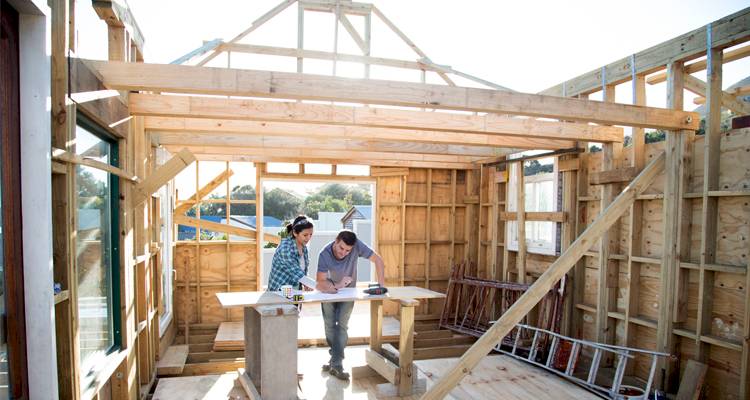
Building Regulations & Planning Permission for New Houses
All new build developments require planning permission and must meet building regulations.
You will need full planning permission before you can build a house. You may have bought a plot with outline planning permission, but you'll need to get a detailed plan accepted by your local authority before you can start any work.
If your application gets turned down, you will need to alter your plans and resubmit them. Planning decisions can be affected by many factors, including conservation issues, lack of parking, noise, traffic and the design of your house.
Applying for planning permission to build a house generally costs between £400 and £500, although this can vary depending on your local authorities.
However, this doesn't include an architect's fees or consulting with your local planning office. There may also be surveys needed to check for flood risks or other environmental issues.
And if you need to appeal the planning decision, you will need to pay an extra £2,000 for this process. You should factor this into your new home cost when creating a budget.
Building Regulations will need to be met when building a new house. Before work starts, during the building process and upon completion, a building inspector will visit the site to ensure everything is satisfactory.
The inspector will check the excavation and foundation work at the beginning, then the damp-proof course and drainage trenches. Once the main structure has been built, they will make at least two further visits.
These inspections are needed for the house to meet building regulations and receive a Completion Certificate. Certificates for your electric wiring and boiler installation will also be required. Your house build will also need to comply with structural, fire safety, ventilation and energy efficiency standards.
What Impacts the Cost of Building a House?
Here are some cost factors below:
Size and Design of Property
The bigger the project, the more you'll spend on materials and labour. For example a small new build bungalow or end terrace property will cost much less than a large, five-bedroom detached house.
The design of your home could affect the cost too. A straightforward single storey built in a simple square, will be cheaper than a house with a more complex shape or with additional architectural features.
Type of Structure and Materials
The main structure of your new house could be built from traditional brick, concrete blocks, timber or come in kit form as prefabricated panels or sections.
It's not just the main structure that will affect the cost though. The choice of cladding and insulation, roofing materials, windows and finishing touches such as paintwork and aesthetic elements will soon all add up.
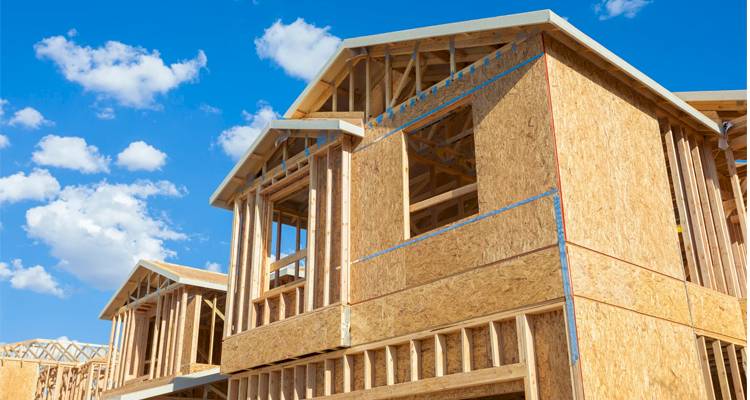
Location and Access
Location is a major factor in the cost of building a new house, with prices in the North of England and the UK often cheaper than in the South.
The demand for land in areas such as London and other major cities can be up to ten times more expensive than the national average. As for building in conservation areas or greenfield sites, these can be restricted to the use of specific materials or require design approvals, adding extra time and expense to your build.
If the site has limited access, such as building off-grid, away from any utility supplies, or is unreachable by any pre-existing infrastructure, then this too can increase the cost.
Connecting your new build to essential services such as water and electricity will also need to be included within your budget.
What's Involved in Building a New House?
Once you've bought your plot of land, drawn up your plans and had planning permission granted, your home is ready to be built. Step-by-step, here's what to expect from the foundations to finish.
The Groundwork
Before any work can start on building your new house, the site needs to be prepared. Depending on the type of plot you're building on, there may be demolition or clearance work required. Plus, access will need to be created for machinery and deliveries to the site.
Before your construction team can start any building work, you or your project manager will need to inform your local authority building inspector that work is about to commence. Pegs and chalk lines will mark out where your house is to be built.
The Foundations
Next, work begins on digging out the foundation trenches, with supports added if necessary. The type of soil or ground that your house will sit on may also dictate how your foundations are constructed. It's likely that your building inspector will want to make an on-site check at this point.
Then, it's time for the footings to go in. These are usually constructed from poured concrete.
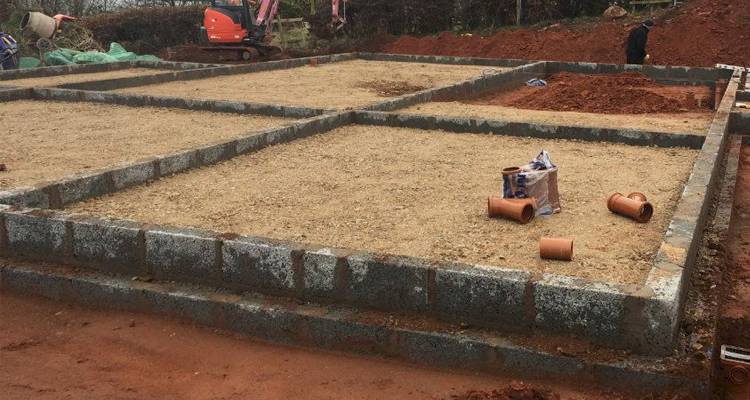
However, if the subsoil on your plot isn't stable enough, piling may be needed. These are steel, concrete or wood columns that sit in the ground to take the weight of your structure.
Guides for the foundations are usually marked out by wooden pegs. As part of the foundation work, drainage and ducts will need to be created for your services. Blocks are usually laid as far as the damp proof course. Damp proofing membranes are then put in place. At this point, your building inspector may make another visit to the site.
The Main Structure
Once the foundations are in, the building of the main structure of your new house will start. This may include digging out service trenches and adding ducts, ready for meter boxes and stopcocks to go in later.
Drainage pipework and vents will start to go in. The floor beams will then go in position, and the initial block and brickwork courses will be built, with doorways and window positions worked out.
The walls will continue to be built up to the wall plate, with lintels for windows, doors and fireplaces put in position, along with the first-floor beams. Walls are often built with an inner blockwork wall, insulation, and brick exterior, but this will depend on the type of construction you choose and your budget.
If the design of your house includes gable ends and a chimney, these will also be built during this stage.
If you're planning a self-build timber frame house, this stage of the build will be different. Usually, designed and engineered sections of the framework will be brought to the site and fitted together.
The external cladding, insulation and other membranes are likely to come in prefabricated panels that join together.
External meter boxes and the water supply to the stopcock may be fitted during this stage.
Wall Plate and Roof Trusses
Once the main body of your house has been completed, the wall plate and roof trusses are installed. The wall plate goes on first. This is a wooden frame that sits on top of the inner blockwork of your wall and provides a base for the house's wooden rafters to sit on.
Next, your roof's trusses are fixed in place. This is the triangular-shaped wooden framework that the rafters and beams will be connected to. These usually come ready-made and are lifted into place.
Horizontal beams known as purlins, along with rafters and joists, are then added to make up your roof structure. These are usually all made from wood. If you're having dormer windows, the framework for these will also be constructed.
Roofing
Next, your roofing materials will be added, beginning with the roof felt. This is a breathable yet waterproof sheet covering often made from composite materials.
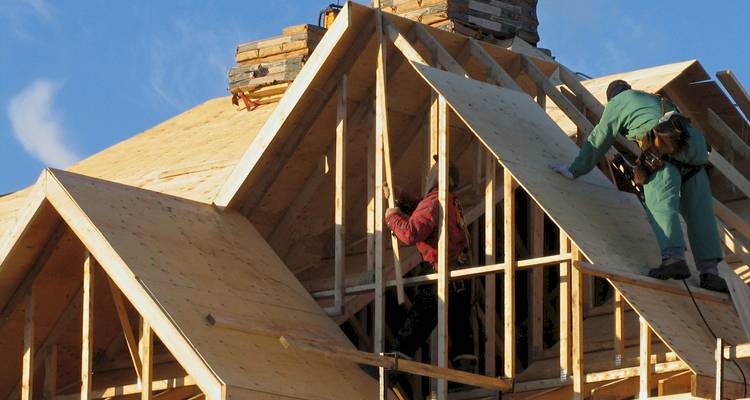
Wood battens will then be laid across the roof, ready for the tiles to be fixed on. Depending on the style of your house and the area you live, the tiles may be concrete, clay or slate. Ridge tiles, valley tiles and lead flashing will also be fitted to help make it watertight.
Then soffits, fascia boards and barge boards are added to improve the weatherproofing and the look of your new house. These can be made of wood or uPVC material.
Exterior and Interior Fittings
Once the house's main structure is complete, it's time for the first fixtures and fittings to be put in place. Guttering and drainpipes, windows and doors are just some of these features. But it may also include rendering and other decorative parts of the exterior.
At this point, you'll see the inside of the house start to take shape too. Stud partition walls will go up, as will doorways, window boards and a loft hatch. A carpenter or joiner will be needed at this stage to complete some of the interior jobs. Many of these tasks are known as first fix jobs - a term tradespeople use for the parts of house construction up to the plastering stage.
Connecting Services
At this stage, pipework and wiring goes in. So, you're likely to see both a plumber and electrician getting to work on your house. Jobs will include the first stage of installing your hot and cold water supply, as well as the waste pipework. If you're connected to the gas mains, internal gas pipework and a gas meter will be installed.
Your electrician should be starting to wire the house, with cables run to where your lighting points and sockets will be. The electrician will also fit the consumer unit, which you may know as a fuse box. Any security, safety or smart systems such as wired fire alarms or carbon monoxide detectors will also start to be wired in. If you want underfloor heating, this may start to go in too.
At this stage, it's important for the plumber and electrician to be working together on bonding and earthing to make your services safe. Your local building inspector is likely to visit the site at this stage.
Flooring, Plastering and Carpentry
As the services are going in, you can expect the house to be taking its final shape. And you'll start to see the damp proof course and screed flooring going in. Insulation and plasterboard will be fitted where necessary, ready for a skim coat of plaster.
There's more work for the carpenter or joiner at this stage too. A staircase will need to go in unless you're building a single-storey home. And the other interior woodwork, including doors, architraves and skirting boards, will be fitted. The rooms in the house should now start to take shape, and once the plaster has dried, it will be ready for the more decorative stages to commence.
Kitchen and Bathroom Installation
The fitting of a kitchen and bathroom will be the next stage of the build. This may be completed by your team of contractors, a specialist fitter, or yourself with help from tradespeople.
For the bathroom installation, you can expect tiling work and the fitting of your bath, shower, sink and toilet to take place. Plus, smaller jobs such as connecting light fittings, hanging mirrors or cabinets and sealing around baths and showers.
For the kitchen installation, you can expect your cupboards, worktops, and large appliances to be fitted first. Then tiles and other decorative touches to be added.
Interior Decoration and Snagging
Painting and wallpapering walls and fitting carpets and other floor coverings are some of the last jobs you can expect to be completed in your newly built home. This is so that paintwork and carpets aren't damaged by the mess and dust of building work.
Your contractors may complete this work for you, or you may have arranged for your own carpet fitters and decorators to do it. As well as the decoration, there may be smaller jobs to be completed around the house. These can include fitting the plug sockets and light switches and checking for snagging issues around the house.
A snagging list may include small defects that need rectifying before you move in. This can include touching up paintwork, tightening loose fittings and fixing leaky pipes.
It may also be necessary to remove or replace faulty fixtures such as scratched panes of glass or cracked tiles.
Exterior Landscaping
The final part of your build is most likely to be the exterior landscaping. This may be completed by a team of contractors or by a landscape gardener. Depending on what outside space you have available on your plot, it may include installing a driveway, gates and fences. Plus, you may have a patio or decking and turf laid.
The final completion of your house will also need to be approved by the building inspector. If everything is satisfactory, a Completion Certificate will be issued.
Can I Build a New Build Myself?
Unless you're a qualified builder, building a house as a DIY project is not advisable. However, you may wish to take on certain elements yourself. For example, if you've got a good business background and are used to planning and budgeting, you may fancy project managing the build yourself.
Alternatively, you may wish to take on some of the non-structural parts of the build. This could include interior jobs such as fitting skirting boards and doors and painting and tiling.
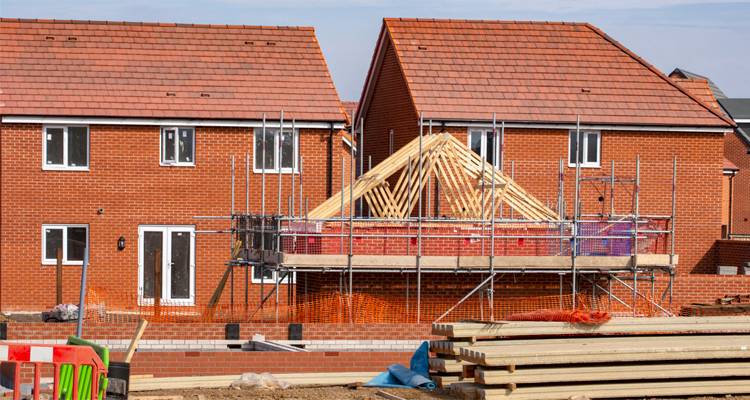
Certain stages of the build need to be completed to a specific standard to meet building and planning regulations. This may entail manual tasks such as digging trenches and mixing mortar. But you may arrange to work as a labourer for your builder, to help cut time and costs.
However, jobs such as wiring and plumbing should only be completed by qualified trades. Connecting to the main supplies can only be done by the gas, electricity and water service providers in your area. And there are health and safety regulations, such as working at height, to consider too
Managing the project could save you around 10% of the total new build cost, and doing some of the work yourself could save you another 5% to 10%, depending on how much you take on. However, if you work full time on the build, you'll need to factor in a loss of income from your day job.
Benefits of Building a New Home
If you're taking on a self-build project, you'll get to choose the location as well as design the style and layout of your new home. You can add more ecological materials and insulation to make it economical and environmentally friendly.
You will also have a guarantee of the quality of work and materials used. Plus, maintenance costs for new build houses are also lower.
Checklist: Hiring Contractors to Construct a New Home
Unless you're already a builder, it's unlikely you'll be building your own house.
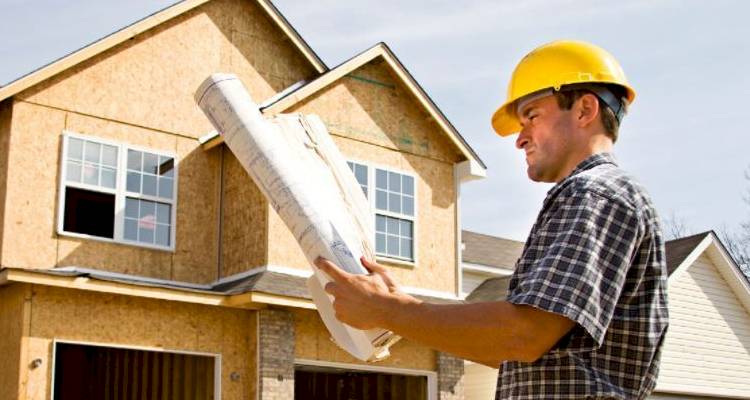
So, it's worth taking the time to hire the right tradespeople or contractors for your project. Use this new house checklist before you hire a builder or contractor.
- Not all builders or building companies have experience of building a house from beginning to end. Only shortlist those who have experience of similar house building projects, using techniques and materials like those on your plans.
- Ask to speak to the builder's previous clients. They should be keen to share details of previous successful projects.
- Most companies and trades will be clear and upfront about their qualifications. They may be able to show you a CSCS card or NVQ certificates to prove their competency.
- Look for companies that are members of relevant trade associations, such as the Federation of Master Builders.
- If you're looking for one company to take on all elements of the build, check they have qualified plumbers, registered gas engineers and electricians on their team. Do they have an experienced site or project manager who can coordinate trades, oversee safety and handle problems?
- Ask what insurance and guarantees they have. Do they have public liability insurance, contractor's all-risk insurance and professional indemnity insurance? And can they provide a written, legally binding guarantee for their work?
FAQs
How long does it take to set up internet in a new home?
This can take anywhere between several weeks and several months. Because you'll have a new address and line, this can take longer than the average time of two weeks.
How long will it take to build a new house?
Is it cheaper to build your own home or buy one?
But even if it looks cheaper on paper, problems can crop up that increase the cost of your build. That's why it's sensible to have a contingency fund.
How do you find a plot of land?
Always check that you're buying from a legitimate seller or landowner. And before you pay any money, check with your local authority that the land's suitable for building on. It may already have an outline or full planning permission in place.
What is a custom built house?
As will the project management. Often it will be part of a much bigger development site. This means there may be some restrictions to the size of home you can have or materials used.



